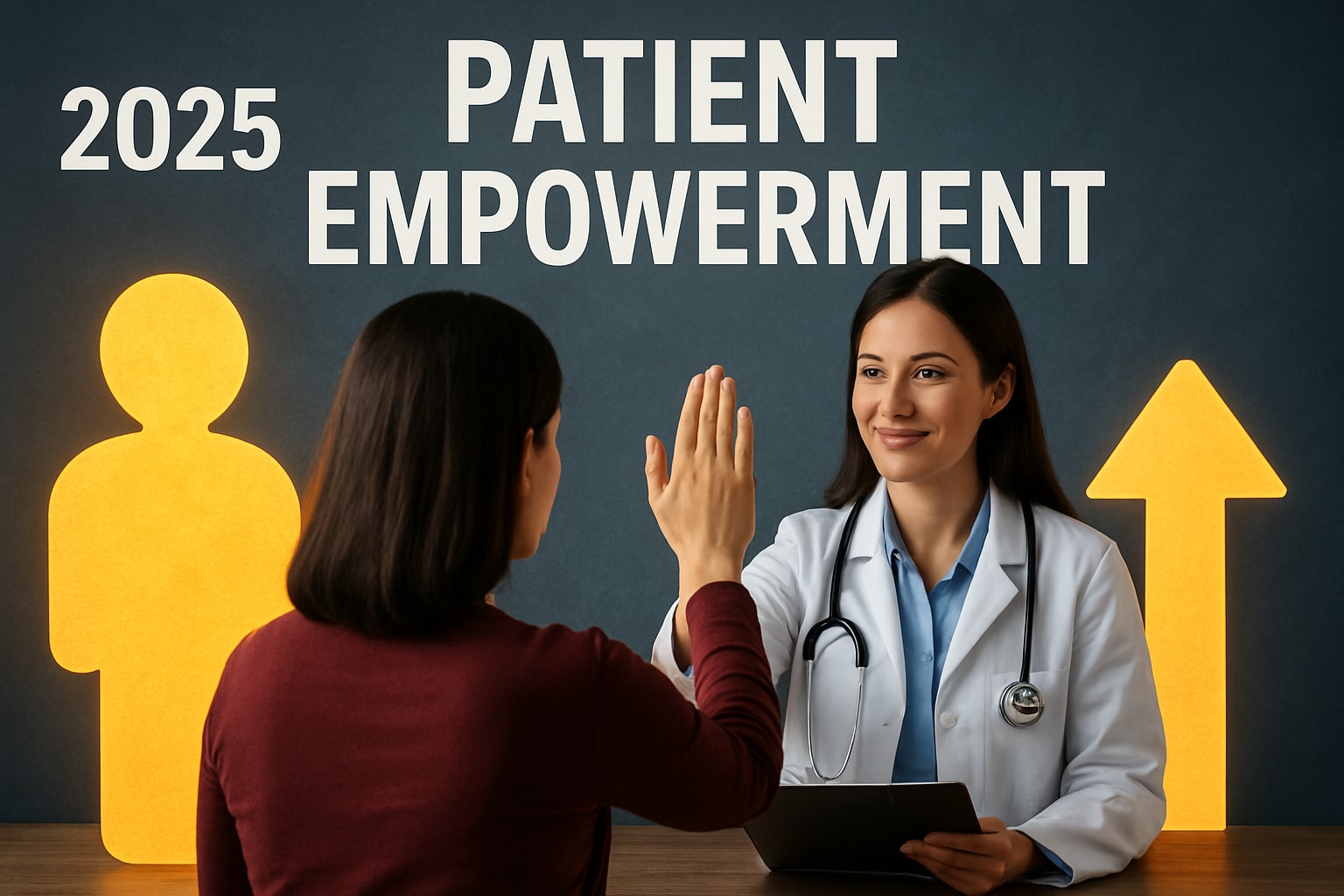Chronic wounds are a growing challenge, affecting millions and leading to significant health complications every year. As healthcare evolves, wound centers are becoming essential for delivering specialized care and improving patient outcomes.
This guide provides expert insights into the latest trends, technologies, and best practices shaping wound centers for 2025. You will discover the fundamentals of modern wound care, explore innovative technologies, and learn how multidisciplinary teams are transforming patient experiences.
Ready to navigate the future of advanced wound care? Let this comprehensive guide empower you to deliver better results in a rapidly changing landscape.
Understanding Modern Wound Centers
Modern wound centers have become essential pillars in healthcare, providing specialized care for patients with complex or chronic wounds. Unlike general clinics, wound centers focus exclusively on advanced assessment, treatment, and ongoing management of wounds that fail to heal through standard care. These centers serve diverse populations, but most often care for individuals with diabetes, vascular conditions, or mobility limitations. Rising rates of diabetes and vascular disease continue to increase demand for expert wound management. According to recent data, chronic wounds now impact roughly 2% of the population in developed countries. For a deeper look at the foundational care approaches that define these centers, see the Principles of wound care.

Defining Wound Centers and Their Role
Wound centers are specialized healthcare facilities dedicated to diagnosing and treating acute and chronic wounds. Their primary role is to offer focused expertise for wounds that do not respond to conventional therapies. These centers differ from general clinics by employing evidence-based protocols and a multidisciplinary team approach. The patient population often includes older adults, individuals with diabetes, and those with vascular conditions. Common wound types treated include diabetic foot ulcers, pressure injuries, and venous leg ulcers. The increasing prevalence of diabetes and vascular disease is a key driver behind the growing need for wound centers. Recent studies show that chronic wounds affect about 2% of people in developed nations, underscoring the scale of this challenge.
Core Services and Clinical Capabilities
Wound centers provide a comprehensive range of services, including detailed wound assessment, debridement, infection management, advanced dressings, and negative pressure wound therapy. These services are guided by evidence-based protocols and standardized care pathways, ensuring consistent and effective treatment. A typical wound center team brings together physicians, nurses, podiatrists, and nutritionists, each contributing unique expertise. A notable specialized service is hyperbaric oxygen therapy, which can accelerate healing for certain wounds. Research indicates that patients treated in wound centers experience up to 40% faster healing times compared to standard care. This significant improvement highlights the value of specialized wound management.
Accreditation and Quality Standards
Accreditation is a key indicator of quality for wound centers, with organizations like the Joint Commission and ACHC setting rigorous standards. Accredited centers are required to monitor and report on healing rates, infection rates, and patient satisfaction. Quality indicators are tracked regularly, allowing for benchmarking and continuous quality improvement. Accredited wound centers consistently strive for excellence, using data to refine care processes and outcomes. For example, centers holding accreditation report 10-15% higher patient satisfaction than non-accredited facilities. Continuous monitoring and adherence to quality standards are central to maintaining high levels of patient care and safety.
Patient Pathways and Referral Processes
The patient journey in wound centers typically begins with a referral from a primary care provider or hospital. After referral, patients undergo a comprehensive intake, followed by detailed assessment and development of an individualized treatment plan. Primary care and hospital referrals are crucial for ensuring timely access to specialized care. Education is provided to both patients and caregivers, empowering them to participate in ongoing wound management. Many wound centers now use digital platforms to streamline referral management and enhance communication. These innovations improve coordination and help ensure that each patient receives the right care at the right time.
Latest Technologies and Innovations for 2025
The landscape of wound centers is evolving rapidly as technology transforms every stage of care. In 2025, digital solutions, advanced therapeutics, and precision medicine are redefining how chronic wounds are assessed, treated, and monitored. Here are the most impactful innovations shaping wound centers this year.

Digital Health and Telemedicine in Wound Care
Digital health advancements are revolutionizing wound centers, making care more accessible and precise. Telemedicine platforms now support remote consultations, empowering clinicians to monitor wounds virtually. AI-powered assessment tools analyze wound images, offering accurate size and healing predictions.
Smartphone apps let patients share wound photos securely, streamlining communication. According to a recent industry report, telemedicine adoption in wound centers surged by 60 percent from 2020 to 2024. This shift bridges gaps for rural and mobility-limited patients, while also easing clinician workloads.
Advanced Wound Healing Products
Breakthroughs in wound healing products are enhancing outcomes in wound centers. The latest dressings feature antimicrobial and bioactive properties, reducing infection risk and stimulating tissue regeneration. Smart dressings now include embedded sensors that monitor moisture and pH, alerting clinicians to early signs of complications.
Additionally, regenerative therapies like skin substitutes and amniotic tissue grafts are providing new hope for non-healing ulcers. With the smart wound care market projected to reach 1.5 billion dollars by 2025, wound centers are equipped to deliver cutting-edge therapies tailored to complex cases.
Diagnostic and Imaging Technologies
Diagnostic advancements are delivering greater accuracy for wound centers. Non-invasive imaging techniques, such as thermography and handheld fluorescence, help clinicians visualize wound depth and detect bacterial loads in real time. Three-dimensional wound measurement tools ensure precise tracking of healing progress.
Point-of-care devices now rapidly assess infection and tissue perfusion, leading to faster interventions. Imaging technologies have reduced misdiagnosis rates by 30 percent, underscoring their value in delivering targeted, effective treatment plans across wound centers.
Data Analytics and Outcome Tracking
Data-driven care is now central to wound centers' operations. Electronic health records (EHR) seamlessly integrate with specialized wound care software, enabling robust documentation and outcome monitoring. Big data analytics help centers benchmark performance, identify trends, and predict healing trajectories.
AI algorithms evaluate patient data to forecast wound healing times and flag high-risk cases for proactive management. Centers leveraging analytics report 20 percent higher healing rates, highlighting the importance of continuous data tracking and quality improvement in wound centers.
Personalized and Precision Medicine Approaches
Personalized medicine is elevating treatment success in wound centers. Genomic and biomarker analysis enables clinicians to tailor interventions based on each patient's unique profile. This approach guides decisions on compression therapy, medication, and advanced dressings.
Customized care plans address factors like comorbidities, mobility, and lifestyle, maximizing healing potential. By 2025, precision wound care is on track to become a new standard, ensuring that every patient receives the most effective, individualized care in wound centers.
Multidisciplinary Teams and Best Practices
Modern wound centers thrive on collaboration. A multidisciplinary team ensures every aspect of patient care is addressed, from assessment to recovery. These teams typically include wound care specialists, nurses, dietitians, podiatrists, and physical therapists. Each member brings unique expertise, creating a well-rounded approach.
Close communication is essential. Weekly case conferences help align treatment plans and enable swift responses to complications. This team-based model leads to better outcomes. Studies show that wound centers with multidisciplinary teams achieve up to 20 percent lower amputation rates, highlighting the value of coordinated care.

Roles and Collaboration in Wound Care Teams
Wound centers rely on defined roles and seamless collaboration. Physicians lead diagnosis and treatment, while nurses manage daily wound care and monitoring. Podiatrists address foot and lower limb wounds, and dietitians optimize nutrition for healing. Physical therapists promote mobility and prevent complications.
Effective teamwork is fostered through regular meetings and shared documentation. For example, weekly case reviews allow the team to adjust care plans promptly. This approach enables wound centers to provide holistic care, reducing complications and improving patient outcomes.
Evidence-Based Protocols and Guidelines
Adherence to evidence-based guidelines is crucial in wound centers. International standards from organizations like the Wound Healing Society and EWMA inform clinical practice. Standardized assessment tools and documentation frameworks, such as the TIME model for wound bed preparation, ensure consistency.
Following protocols leads to measurable improvements. Research shows that wound centers with strict protocol adherence experience 15 percent faster healing rates. These guidelines help clinicians deliver care that is both effective and efficient, supporting optimal patient results.
Patient Education and Engagement
Empowering patients is a cornerstone of successful wound centers. Education starts at intake and continues through every visit. Patients receive tailored materials, access to apps, and participate in workshops. Programs focused on prevention, such as managing diabetic foot ulcers, equip individuals with the knowledge to avoid complications.
Engaged patients are more likely to adhere to care plans. Data reveals that wound centers with robust education initiatives see a 30 percent reduction in wound recurrence. This proactive approach builds patient confidence and fosters long-term healing.
Training and Continuing Professional Development
Continuous learning is vital for staff at wound centers. Ongoing training ensures the team stays current with new techniques and technologies. Certification programs and annual workshops are standard, supporting professional growth and clinical excellence.
Certified staff correlate with higher patient satisfaction scores. Wound centers that prioritize continuing education create a culture of quality and innovation. This commitment to development not only enhances care but also attracts top talent to the field.
Enhancing Patient Experience and Outcomes
Delivering exceptional patient experience is a cornerstone for wound centers in 2025. As the complexity of chronic wounds rises, the focus has shifted to holistic, patient-centered care that improves outcomes and quality of life. Let us explore the core strategies wound centers use to ensure every individual receives optimal support and healing.

Patient-Centered Care Models
Modern wound centers prioritize individualized care plans that reflect each patient's unique needs, values, and cultural background. Shared decision-making is at the heart of this approach, ensuring that patients are active participants in their treatment journeys.
By incorporating patient goals into care planning, wound centers foster stronger engagement and trust. For example, tailoring interventions for venous leg ulcers helps align therapy with lifestyle and mobility preferences. For more details on this specialized care, see Venous leg ulcer management.
Respecting cultural factors and preferences also enhances adherence to treatment, with studies showing patient-centered models improve care plan adherence by 25%. This individualized approach is vital for long-term healing and satisfaction.
Pain Management and Quality of Life
Pain is a significant barrier to wound healing and overall well-being. Wound centers deploy evidence-based pain management strategies to minimize discomfort and support mental health.
Practical methods include using topical anesthetics during procedures, employing distraction techniques, and offering psychological counseling. These measures not only reduce pain but also address anxiety and depression associated with chronic wounds.
By prioritizing effective pain control, wound centers have observed higher healing rates and improved patient-reported outcomes. Addressing both physical and emotional needs is essential for delivering comprehensive wound care.
Reducing Barriers to Access and Equity
Wound centers are tackling disparities in care by expanding outreach to underserved populations. Socioeconomic and geographic barriers can limit access, especially for rural or remote communities.
Innovative solutions include mobile wound care units and telehealth services that bridge the gap for patients unable to visit clinics. Telemedicine, in particular, has increased rural access by 40%, enabling more timely interventions and follow-up.
Outreach programs and community education further support equity, ensuring that all patients can benefit from advanced wound care regardless of location or background.
Measuring and Reporting Patient Outcomes
Continuous improvement in wound centers depends on rigorous measurement and transparent reporting of patient outcomes. Standardized metrics such as wound healing rates and patient-reported outcome measures (PROMs) are routinely tracked.
Digital platforms allow for real-time feedback and outcome monitoring, making it easier to adjust treatment plans promptly. Patient satisfaction surveys also give valuable insights into areas for service enhancement.
Centers that systematically measure and report outcomes have achieved an 18% improvement in key quality metrics, reinforcing the impact of data-driven care on patient experience and recovery.
Regulatory, Reimbursement, and Policy Changes in 2025
Navigating the evolving landscape of regulatory, reimbursement, and policy changes is crucial for wound centers in 2025. As healthcare systems adapt to new requirements, staying informed ensures compliance, financial sustainability, and improved patient outcomes.
Evolving Healthcare Regulations
In 2025, wound centers face a rapidly changing regulatory environment. New policies mandate rigorous data privacy measures and updated telemedicine laws, impacting daily operations. For example, recent HIPAA updates require enhanced safeguards for digital wound data and virtual consultations.
One significant shift is the requirement for outcome reporting tied to reimbursement. Wound centers must document healing rates and patient outcomes, aligning with broader health policy goals. According to the Human Wound and Its Burden: Updated 2025 Compendium of Estimates, chronic wounds remain a major public health concern, increasing the urgency for regulatory compliance and effective care delivery.
Reimbursement Trends and Value-Based Care
The reimbursement landscape for wound centers is shifting toward value-based care. Traditional fee-for-service models are being replaced by bundled payments and pay-for-performance incentives. Medicare, for instance, rewards centers that demonstrate reduced readmission rates and improved healing outcomes.
This transition emphasizes quality over quantity, encouraging wound centers to focus on measurable results. According to the Wound Care Centers Market Report 2025-2030, these models have contributed to a 12 percent increase in revenue for wound centers, reflecting the financial benefits of improved patient care.
Documentation and Coding Updates
Accurate documentation and coding are more important than ever for wound centers in 2025. The adoption of new ICD-11 codes allows for more precise classification of wound types and treatments, reducing errors and supporting better data analysis.
Automated coding tools integrated with electronic health records help streamline workflows and minimize claim denials. By maintaining thorough, real-time documentation, wound centers can optimize reimbursement, ensure compliance, and support quality improvement initiatives.
Impact of Regulatory Changes on Patient Access
Policy changes are directly impacting patient access to specialized wound care. New rules are expanding eligibility and coverage for advanced treatments, making it easier for more individuals to benefit from wound centers’ expertise. However, navigating insurance barriers remains a challenge for some patients.
Advocacy efforts continue to push for broader wound care benefits and reduced administrative hurdles. As a result, policy shifts in 2025 are projected to increase access to wound centers for 500,000 additional patients, ensuring more equitable care across diverse populations.
Future Trends and Expert Predictions for Wound Centers
As we look ahead, wound centers are poised for significant transformation, driven by research, technology, and a renewed focus on sustainability. These trends are shaping not only how care is delivered but also how patients experience healing in 2025 and beyond. For a comprehensive market outlook, see the Wound Care Centers Market Size And Share Report, 2030.
Emerging Research and Clinical Trials
Research in wound centers is accelerating, with over 200 clinical trials globally focusing on innovative therapies. Stem cell treatments, gene therapies, and growth factor gels are at the forefront, offering hope for patients with complex wounds. Regenerative medicine is rapidly evolving, with early results showing improved healing for chronic ulcers.
Clinical trials are also exploring novel biomaterials and personalized approaches to wound healing. By participating in these studies, wound centers contribute to evidence-based care and help set new standards for treatment. Keeping pace with research ensures that patients benefit from the safest and most effective therapies available.
Artificial Intelligence and Automation
Wound centers are embracing artificial intelligence to streamline diagnostics and automate repetitive tasks. AI-powered tools can analyze wound images, predict infection risks, and suggest tailored treatment plans. Robotics are being piloted for wound debridement and dressing changes, reducing clinician workload by 15 percent.
Workflow automation is enhancing efficiency, allowing staff to focus on patient-centered care. As these technologies mature, wound centers will deliver more accurate assessments and faster interventions. The integration of AI ensures improved outcomes and supports a data-driven approach to wound management.
Expanding Roles for Outpatient and Home-Based Care
Outpatient services and home-based wound care are expanding rapidly. Wound centers are leveraging remote monitoring, mobile care teams, and hospital-at-home models to reach more patients. This shift is especially vital for those in rural or underserved communities.
For insights into best practices in this area, explore Home health wound care insights. By extending care beyond traditional settings, wound centers are projected to grow home-based services by 25 percent by 2026, improving access and continuity of care for diverse populations.
Sustainability and Environmental Considerations
Sustainability is becoming a priority for wound centers. Clinics are adopting eco-friendly products, reducing waste, and incorporating biodegradable dressings and packaging. Sustainable practices not only benefit the environment but also enhance the reputation of wound centers among patients and regulatory bodies.
By 2025, 40 percent of wound centers are expected to have implemented green initiatives. This shift reflects a broader commitment to responsible healthcare, ensuring that advanced wound care remains viable for future generations.






